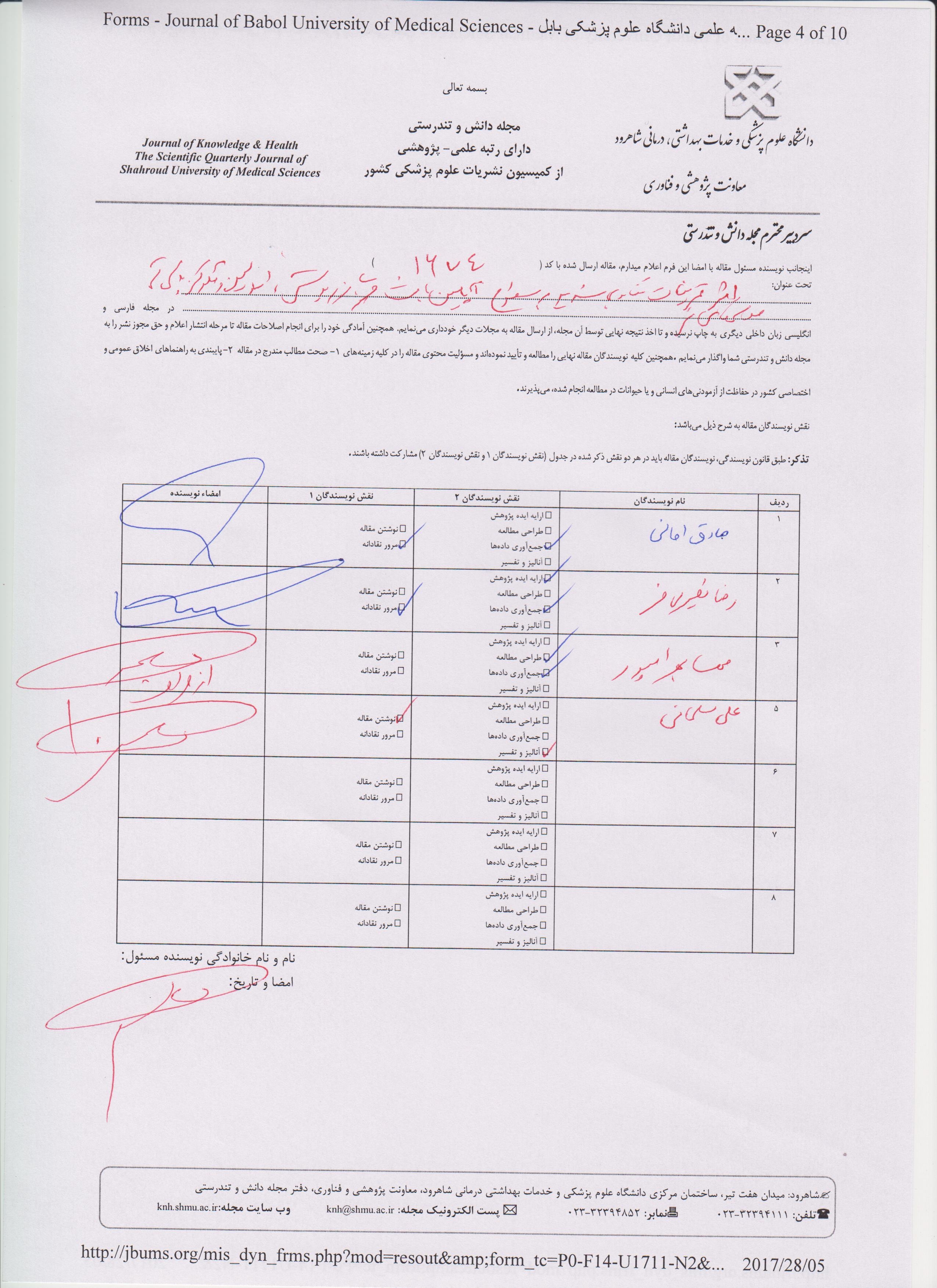The Effect of the High Intensity Interval Training on Visceral and Subcutaneous Levels of Apelin, Plasma Insulin and Glucose in Wistar Male Rats
DOI:
https://doi.org/10.22100/jkh.v12i3.1674Keywords:
High intensity interval training, Apelin, Subcutaneous fat, Visceral fatAbstract
Introduction: In recent years, the prevalence of obesity has become epidemic, and exercise activity is the strongest stimulus to reduce it. Today, fatty tissue is known as adipocin, which produces a large number of cytokines and hormone. The aim of study was to investigate the effects of High Intensity Interval Training (HIIT) on visceral and subcutaneous levels of Apelin, plasma insulin and glucose in Wistar male Rats.
Methods: Twenty male rats were recruited in this study and divided in training and control groups, randomly. Training program performed in 5 weeks, and 5 sessions per each week. Subjects completed 6 high-intensity intervals in 2 minutes with 37 m/m during first week, 7 high-intensity intervals in 2 minutes with 40 m/m during second week, 9 high-intensity intervals in 2 minutes with 43 m/m during third week, 10 high-intensity intervals in 2 minutes with 49 m/m during forth week, 12 high-intensity intervals in 2 minutes with 52 m/m during fifth week that one minute recovery was between intervals. Blood sampling and biopsies were taken 72 hours after latest session. Independent T-test was used to compare mean during pre and post-test. Significant level was set at 0.05.
Results: The results showed significant variations in insulin and visceral and subcutaneous levels of Apelin in training group than control group (P<0.05). But, the variation in glucose levels in training group than control group was not significant (P>0.05).
Conclusion: The results showed that HIT training can decrease visceral and subcutaneous levels of Apelin, which can prevent the diseases associated with obesity. Apelin also can result in decrease in insulin resistance and increase in insulin sensitivity.

Downloads
Published
Issue
Section
License
This work is licensed under a Creative Commons Attribution-NonCommercial 4.0 International License.


